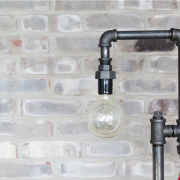Mainframe Modernization: Making It Happen
In the fast-paced world of technology and business, it can be hard to keep up with what’s new. What’s new today can be obsolete in a few weeks, and adapting to this ever-changing landscape can become a challenge if an organization isn’t well prepared or equipped. Modernization of systems doesn’t necessarily mean transitioning to an entirely new system or platform; often, all it takes is actual modernization of existing tools to help them adapt to new business demands and requirements.
The mainframe is one system that has stood the test of time. A number of naysayers taut the system as “legacy” or obsolete, but the fact that mainframes handle 68% of the world’s production IT workloads indicate otherwise. Mainframes are proof that the latest isn’t always the greatest, standing firm as one of the foundations of business systems in today’s most successful businesses around the world. What some don’t realize is that the race toward digital transformation is not reliant on the system or platform an organization has in place; digital transformation initiatives rise and fall depending on how they approach data. Regardless of the platform used, data analysts who work with irrelevant or stale data are prone to achieve false or misleading results. Access to real-time data is key, and data gathered days or hours—even minutes—ago isn’t a current representation of the current situation. This can lead to an organization acting on miscalculations and opportunities that no longer exist. Actionable insights need to come from real-time data to ensure that your organization can make sound business decisions in a timely manner.
The Old vs. the New
Conventional methodologies have kept mainframe data and real-time data separate due to issues with accessibility. Most businesses traditionally use Extract, Transform, and Load (ETL) processes for data analysis, a logistically complex and time-consuming process that’s prone to errors and stale data because it’s performed only periodically. This can lead to hours or even weeks of delay that’s simply unacceptable in today’s always-connected, always-on digital business landscape. Today’s businesses depend largely on real-time business intelligence—and access to it—to get a competitive edge.
In light of this perceived separation between mainframes and real-time data analytics, data scientists have found that the creation of analytic models can be too slow at times due to the conventional process of offloading data from the mainframe to other platforms for analysis. Organizations should move away from ETL processes and find ways to make real-time data analytics from the mainframe quicker and more efficient for their business. Mainframe modernization is key in making mainframe systems work with modern solutions because it allows for data virtualization, integrating all disparate enterprise data into a logical data layer. This layer manages the unified data and provides centralized governance while delivering the required data in real-time to business users.
Depending on the industry, mainframe modernization can optimize key business processes like order processing, payment gateways, and internal business operations queries. Mainframes are known for performing high-volume transaction processing, and these transactions can make or break a business. Managed in real-time, it will help organizations battle fraud and manage business risks as they arise, or even before they do. The data gathered can also help paint a more accurate representation of who a company’s customers are, allowing them to better plan resources and come up with more personalized initiatives.
Making IT Happen
Mainframe modernization is a major undertaking that presents a host of options for every organization. These options will vary depending on a number of factors, including business size, tenure, and industry. The following, however, are a few of the key considerations in modernization.
- Look for quick wins
As all businesses know by now, time is of the essence in every undertaking, even mainframe modernization. Its success is dependent on how quickly it can deliver the desired results. - Automate migration to avoid disruption
Accelerating modernization efforts means leveraging modern tools API’s. The platforms available today are designed to minimize the effects of the modernization process if not avoid disruption completely. - Focus on total cost of ownership (TCO)
It’s a mistake to view the initial cost of modernization at face value. Amore accurate view of costs involves a focus on the total cost of ownership. Calculating the TCO, or the purchase costs plus operation costs, will help minimize it even before modernization initiatives commence. - Don’t just leave everything to IT
The modern IT team is one that includes everyone in the organization. Mainframe modernization is more a business initiative than an IT concern, and as such, should involve decision makers and business leaders. System integrations and updates remain the responsibility of IT specialists, but choosing the appropriate modernization approach and ensuring that the initiative succeeds should be a responsibility shared by the entire organization. - Create business value
Mainframe modernization isn’t simply the implementation of technology upgrades or migration to a new system; it should also be an opportunity to combine the old with the new. Improve existing business processes or create new ones accordingly while capturing institutional knowledge from mainframe systems to gain a competitive edge.
Options abound when it comes to mainframe modernization, but that doesn’t mean that you should apply them all or choose the latest and greatest. Choosing the right approach to modernization entails re-examining your business and its goals and deciding which solution will take you there—and take you there fast. There exists an “imaginary” gap between digital innovators and mainframes because of the challenges and costs in data accessibility and system availability. The goal of mainframe modernization is to bridge this gap in the best, and fastest, way possible.

 Image Source: Pexels
Image Source: Pexels





Leave a Reply
Want to join the discussion?Feel free to contribute!